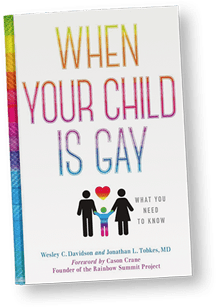According to a recent Gallup report, an estimated 5.6% of Generation X (born 1981-1996) in the United States identify as LGBT. This report was based on more than 15,000 phone interviews conducted through 2020 and reflected a jump of nearly 25% since 2017, the last year the survey compared findings.
The findings of Gallup:
- 6% identify as bisexual.
- 5% identify as gay
- 7% identify as lesbian
- 3% identify as transgender
- 3% described their identity as “queer.”
Those who were interviewed were able to identify in more than one category.
These figures are up from a similar Gallup done in 2017 that reported a 4.5% increase in LGBT self-identification. There were roughly 5% no opinion responses in Gallup’s data from 2012-2017. The Baby Boomers (56 and older) responded with only a 2% increase in non-heterosexual identification.
Why The Increase in LGBT Identity?
Jeffrey Jones, editor of the Gallup poll, believes these current findings are most likely due to a greater willingness for younger Americans to be open about their identity rather than a “true generational shift in sexual orientation and gender identity.” The topic is no longer taboo. “They may just feel more comfortable telling an interviewer in a phone survey how they describe themselves. In the past, people would maybe be more reluctant.”
In just eight years, Americans polled showed a greater acceptance of same-sex marriage. In the 2020 June poll, 67% of Americans backed gay marriage whereas in 2012, 53% were in favor of it.
Other conclusions from this 2020 survey?
- Politically liberal people are more likely to identify as LGBT than men.
- There was no meaningful educational difference: 5.6% of college graduates and 5.7% of college non graduates are LGBT.
- Jones points out that surveying sexual orientation and gender identity is inherently precise given shifting definitions and varying levels of outness.
- One in ten LGBT Americans married a same-sex spouse, and a slightly smaller proportion have a same-sex domestic partner
What Other Researchers Have Found
Cornell University:
In 2005, a Professor of Clinical and Developmental Psychology at Cornell University, Ritch C. Savin-Williams, interviewed teenagers about their sexuality and found that the old research model of the gay teen as being lonely, unhappy, simply wasn’t true. Dr. Savin-Williams’s findings resulted in The New Gay Teenager (Harvard Press: 2005).
In his book, Dr. Savin-Williams argues that the gay adolescent will eventually disappear. “Teens who have same-gendered sex and desires won’t vanish. But they will NOT need to identify as gay. They may not even need to have a predominantly or even significantly same-sex orientation. Disconnects between behavior, identity, and sexual orientation already coexist for many teens.”
In 2017, this same author and professor wrote another book entitled Mostly Straight. (Harvard Press: 2017). It contains stories of forty “mostly straight” young men and is designed to help the reader understand the biological, psychological and cultural forces that result in sexual fluidity and self-identification.
Washington State University:
In November 2015, a group of Washington State researchers disputed the continuum theory of sexual orientation purported by sexologist Alfred Kinsey in 1948. They established a categorical distinction between people who are heterosexual and those who aren’t.
Their conclusions are different from the heterosexual-homosexual continuum used by Kinsey to describe sexual orientation although the findings do support a more recent biological hypothesis of sexual orientation.
Their findings by analyzing the reported sexual behavior, identity and attraction of more than 33,000 American adults yielded these conclusions:
- 3% of men are not heterosexual.
- 7% of women are not heterosexual.
Whether you believe polls that profess that sexual orientation can change, that Alfred Kinsey was correct in his belief that sexual practices are on a continuum, that Savin-Williams’s theory that subjects can’t be pigeon-holed is proof or Washington U.’s opposite theory that you are either in one camp or the other, it seems that the subject of identity is not taboo nor are interviewees frightened to reveal themselves.

When Your Child Is Gay: What You Need To Know
For more detailed advice, see book, co-authored with a mother of a gay son and a psychiatrist, Jonathan L. Tobkes, M.D.